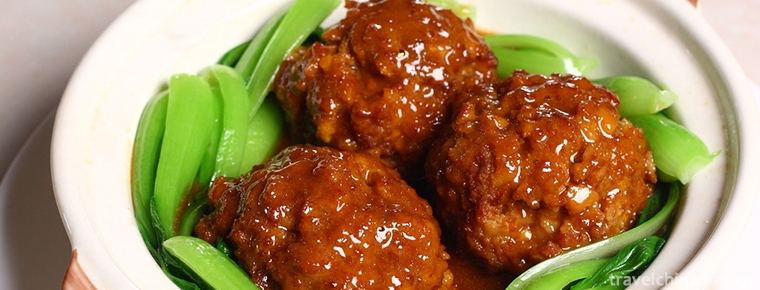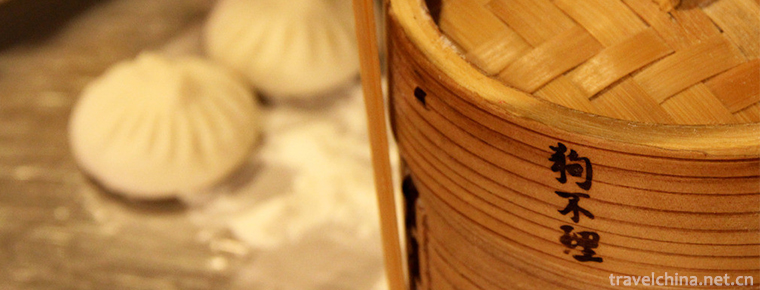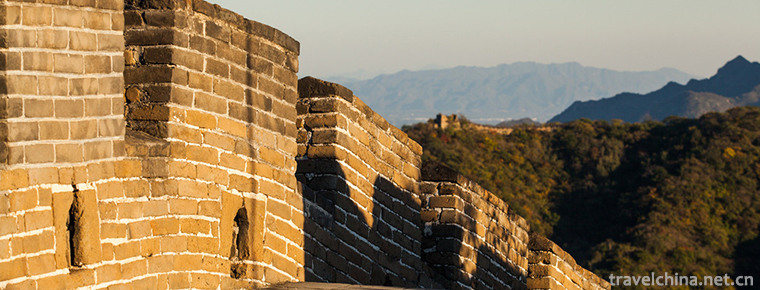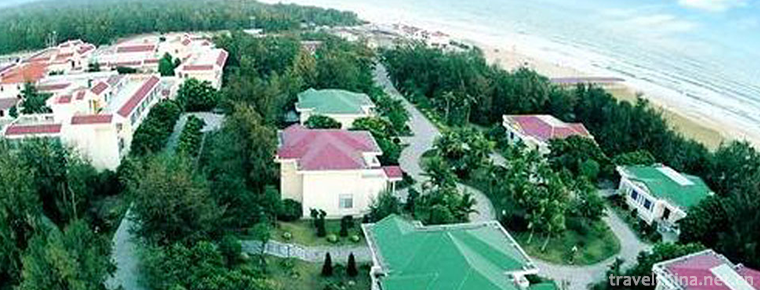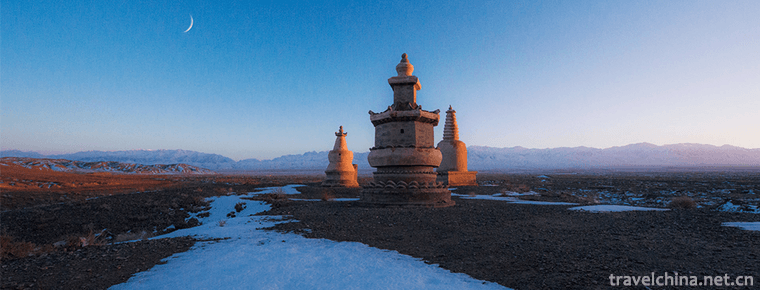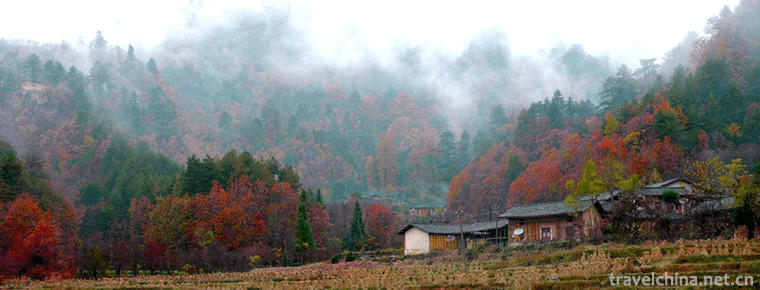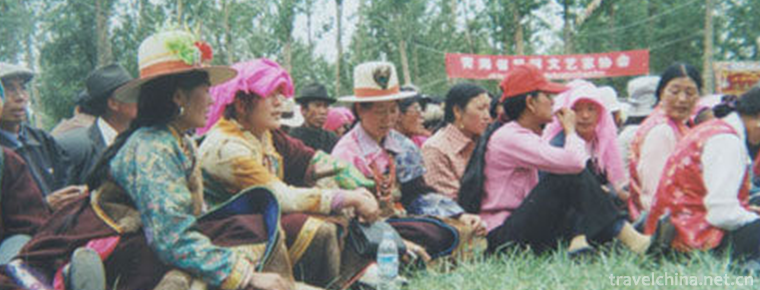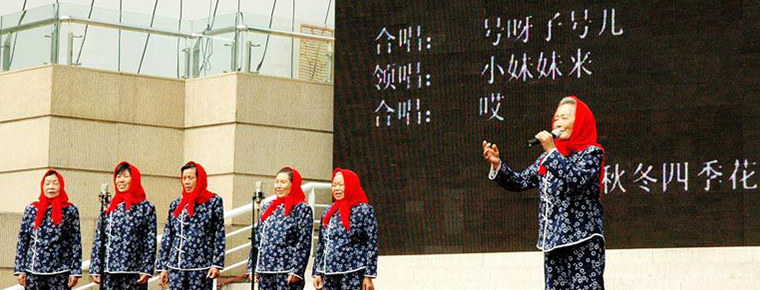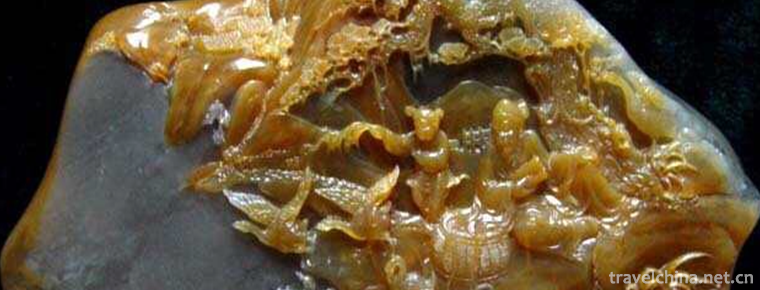Yao embroidery
Yao embroidery
Yao embroidery is exquisite and delicate. Women practice flower-picking at the age of 6-7. When he grew up, he became a master of embroidery. Yao embroidery patterns are mainly used to represent trees, flowers, birds and animals, Yunxia hydrology and urban gear, as well as geometric and literal shapes and characters, with a wide range of names. And each branch has its own pattern. It's amazing that it's so colorful.
In 2011, it was selected as the third batch of national intangible cultural heritage list.
Historical Origin
Legend has it that in ancient times there was a king of peace who owned a dragon dog with five colors of hair and a pan name of Hu. One year, neighbouring King Gao's criminal border, Ping Wang sent generals to expel fruitless, so Zhang Bang recruited generals, who can take the first rank of the King Gao, a reward of twelve thousand, feudal ten thousand families, with the promise of women. Unexpectedly, no one in the Manchu Dynasty applied for military and civil service, but Panhu was the only reward for his kindness and resolutely uncovered the imperial list. King Ping was so happy that he gave a banquet. Eat, worship, walk like clouds, swim in the sea, seven days and seven nights, to the high kingdom. When the emperor Gao was in the dynasty, he recognized Panhu and was delighted in his heart. He laughed that the King of Ping could not be a dragon dog if he had such a dragon dog. If he invested in China today, his country would be defeated. As the saying goes, when foreign bodies enter the country, they will win. It is the Zhenxiang of Xingbang that I can breed this dog. So he retreated to the guide dish and went into the inner palace, where he stayed with wine and delicacies. Every time he sat down, he often ordered his waiter to stand by. One day, Gao Wang's palace was enjoying flowers, wet stamen and strong flower wine, and he was drunk and unconscious. When Gao Wang was alone, Pan Hu immediately killed Gao Wang and won the first Hui Dynasty. King Ping and all the ministers regarded it as the first great joy of King Gao. At this time, the ministers said that Panhu was an animal, not a wife or a daughter, and there was no way to be a knight. The two princesses heard it and said, "The King repeats that the uncle is trustworthy, and can not be a woman with a small body, but bear a clear promise in the world, the country's misfortune is also." From then on, King Ping promised the two princesses to Panhu as his wife. Choose a day to get married, and command the ministers, cover their body, send a spotted dress to cover their body, embroidery with a band to tie their waist, embroidery handkerchief to tie their forehead, embroidery pants, to hide their shares, embroidery cloth a pair to wrap their shins. After marriage, with the help of the two princesses, Panhu changed from a dragon dog to a beautiful man, with six men and six women. Wen Zhiyue, king of Pingwang, sealed Panhu as the ancestor of Panguwang. Six men and six women were descendants of Wang Yao, and were given twelve surnames. Although Panwang was favored after his meritorious service, he did not enjoy the splendor and wealth. Instead, he took his wife and children into the deep mountains of "lush vegetation, no one travels", and taught them to hunt, weave and embroider. "One day when Panwang went hunting in the mountains and chased an injured ram, he was attacked by a mad backlash and fought fiercely. Unfortunately, he was crossed by a stone sheep's horn and fell on a rocky cliff, and Zimu was going to die." The sheep fell off the cliff and died. The whole family was so sad that they cut down the catalpa trees, peeled the sheep's skins and made long drums. They beat the drums to vent their anger and worshipped the king of the sacrifice plate.
Yao people's "good five-color clothes" is a symbol of ancestors'memory. "Guangdong Xinyu" said: "Panhu Mao is colorful, so Yao Du's clothes are gorgeous." Five colors refer to red, green, yellow, white and black, which were called color in ancient times. They are a symbol of purity and awe-inspiring inviolability. In order to commemorate Panwang, his wife, professor and children embroidered various patterns with five colors, matched with clothing, handed down from generation to generation, which may be the origin of Yao embroidery.
Introduction of Yao Nationality
Yao nationality is one of the minority nationalities with a long history in China. The northern part of Guangdong Province is one of the main inhabitants of Yao nationality. Yao costume shows its own national characteristics with its rich connotation and unique national style. Yao women have learned embroidery from elementary school and passed it on from generation to generation. They write Yao culture with their exquisite skills and unique techniques. Based on the Yao nationality in northern Guangdong, this paper takes the Yao nationality costume embroidery as the research point, traces its history and excavates its rich cultural connotation.
Yao girls usually learn embroidery from a sensible beginning. They get blue cloth, coloured wool, needles from their mothers, or gather around their mothers, or among the girls who embroider, to learn embroidery skills. Embroidery shows Yao women's intelligence and pursuit of a better life. Their embroidery works are exquisite in composition, colorful, exquisite in design and rich in national color. They have won praise, favor and research from many scholars at home and abroad.
Main uses
Embroidery is mainly used for accessories on clothing, men's and women's clothes, headscarves, belts, aprons, children's hats, bags, umbrella bags and other items. According to the traditional custom of the Yao people, a scarf is a valuable gift for a young woman when she falls in love with her sweetheart. Therefore, most Yao girls begin to learn embroidery at the age of eleven or two.
Material pattern
Embroidery material is red, green, yellow, black and white five kinds of color line to match the color embroidery; if white cloth is used as the base cloth, red, green, yellow and black line embroidery; if blue-black cloth is used as the base cloth, red, green, yellow and white line embroidery is used, in fact, only four kinds of color line embroidery. Although the pattern combination and color matching are different because of the different uses of the underlying cloth after embroidery, the basic pattern of embroidery is stereotyped. There are more than 30 types of individual maps dismembered from these patterns, and they are evolved from three lines. The lines are diagonal, vertical, parallel and arcless, with angles of 45, 90 and 180 degrees, respectively. Embroidery does not need to draw a manuscript, first with black or white lines (depending on the color of the cloth) according to the cloth pattern embroidered a row of square, and then embroidered in the grid different graphics. The human and animal patterns in the picture are limited to white or black but not to other colors. Its embroidery is from the opposite, not looking at the front, but it can make the front form a triangle, tooth shape, city shape, etc. It is combined to form an object pattern, and then combined, that is, the pattern on various clothing and clothing. Among these patterns, there are symbols of men and women, birds, animals, flowers and plants, etc., with a wide variety of patterns and brilliant.
Technological characteristics
There are many kinds of Yao embroidery, such as flower bags, flower belts, flower caps, headdresses, footbands, aprons and so on. There are also wedding dresses and shawls prepared by girls for marriage, purses and sachets for love, etc. These handicraft articles are all made of brown and black cotton cloth as substrates, red, yellow, blue, white, green, black and purple velvet yarn as materials, and embroidered with three inch long embroidery needles to produce a variety of patterns. Patterns are square, triangle, shuttle, round, water, wave, zigzag, I-shaped and double butterfly love flowers, double dragon play beads, rice spikes and flowers and other plastic arts. They are skillful in choosing colours according to the needs of varieties, and are skilled in elaboration. The embroidered patterns are antique, beautiful and generous, with strong and national characteristics. Embroidered with a simple Yao bag, smart Yao girls can design a layout, with green water pattern as the bottom, white spray as the wave light, forming a vast ocean of scenery; then embroidered triangle, shuttle, zigzag and other miscellaneous patterns, indicating the ups and downs of mountains, flowers, fragrant birds; and then, embroidered with blue sky and white, red sun hanging high, Eagles flying. Xiang. Dynamic and static interweave, like a beautiful mountain scenery. One needle, one thread and one pattern all reflect the unique ingenuity and deep feelings of Yao women.
Inheritance characteristics
Embroidery can be said to be the lifelong craft of Yao women. Girls learn to hold needles and thread with their elders. They usually use embroidery garments, laces, foot straps and other common items to practice basic skills. By adolescence, embroidery is also the most tense period, because girls enter the stage of love, they must carefully embroider flower bags, purses, sachets, headkerchiefs as a gift to the lover, with excellent art, show their talent, win the admiration and love of young men. At the same time, they also painstakingly embroidered wedding dresses, aprons and other treasures, as an indispensable dowry when marrying. The dowry is more delicate and beautiful than any embroidery. It pays attention to novelty and novelty. After marriage and in middle age, women and their husbands embroidered clothes, cigarette bags and so on, as a sign of good wife and good mother. From middle age to old age, besides embroidery daily necessities, their main duty is to teach their skills to the next generation and train successors. Therefore, Yao embroidery can be handed down from generation to generation. Embroidery art is lively, meticulous and rough, which cultivates the industrious, gentle and enthusiastic character of Yao women.
The Yao family regards their embroidery works as the most precious thing, and generally does not transfer them to others. If an outsider enters the mountain and can get the Yao bag or flower belt, the Yao family regards him as the most honorable guest.
Inheritance Significance
Yao embroidery in these patterns may have retained the history of Yao, family, religion, economy, life and other aspects of the traces, to be further excavated and discussed in the future, of great value.
Main varieties
Yao costume embroidery varieties include female embroidery triangular scarf, female embroidery headscarf, male embroidery headscarf, male shawl, embroidery collar, embroidery garment, embroidery waistband, embroidery bag, embroidery skirt, embroidery foot tie, children embroidery cap, children embroidery horse trousers and more than ten varieties. The patterns of embroidery include Panwang prints symbolizing imperial power, as well as animal and plant patterns such as horse head, dragon tail, longan, cockscomb, bird, hundred flowers and tree patterns. There are also patterns of nature such as mountains, rivers, suns, moons, fields and grain "wheat".
1. Triangle embroidery towel: It is the decoration worn by Yao women in Panshi, Guoshui Six Couplets and Qixing Cave. Beautiful and charming.
2. Panwang Embroidered Head Pad: It's made of white velvet in the middle, and the rest is made of red velvet with silver drum, silver medal and silver bell, which represents the supreme position of Panwang Print, and also symbolizes beauty and wealth. Every married woman in Liannan Paiyao wears a flower headdress on her head.
3. Embroidered headscarf: It is a headscarf worn by Yao men. The two ends of the red cloth in the head are embroidered with patterns, which are red headscarves.
4. Men's Shawl: It's an ornament worn by Yao men. Paiyao men's shawls vary from region to region. Yaoling and three rows of men's shawls are stitched together with two Panwang print embroidery patterns and decorated with silver medals, silver drums and silver bells. Male shawls in Damaishan and Nangang are directly decorated with silver medals, silver drums and silver bells on the back of their jackets, symbolizing the dignity and wealth of the Yao ancestor Panwang. Yes.
5. Embroidered collar: Paiyao women like to insert a piece of cloth embroidered with dragon pattern and August flowers on the collar to reinforce the collar.
6. Embroidered scarf: Paiyao women's jacket is decorated by placing an embroidered cloth under the collar.
7. Embroidery garment: Paiyao women's dress jacket, about 1 metre long, collar edge, upper and lower back, sleeves are embroidered horse head, dragon tail and other patterns, exquisite edge, symbolizing a rich and beautiful life.
8. Female embroidery waistband: Paiyao women's belt around the waist, white, embroidered at both ends of the belt and tied 66 spikes, spikes with copper money or beads as decoration, indicating a bumper grain.
9. Embroidery bag: Mainly with dragon pattern and wheat ear pattern. Bag Paiyao is called "seed bag". In order to make women beautiful, Paiyao is called "dragon seed bag". It is translated into embroidery bag, which symbolizes a peaceful and prosperous life.
10. Embroidered skirts: Embroidered skirts can be divided into pleated skirts, cylindrical skirts, A-shaped skirts, short skirts and so on. Generally about 60 centimeters long, more time-consuming, its complex and diverse patterns, mostly animal patterns as the theme, often painted in the painting, its ingenious design, brilliant color is amazing. It can also be used as a baby's swaddle to keep warm and avoid evil. It is known as "Baibao Skirt".
11. Embroidered foot binding: foot binding cloth tied to legs, black. Embroidered with cockscomb pattern or dragon tail pattern, field pattern and other patterns.
12. Embroidered straps: the "D" shaped straps used to carry children, with white cloth on the top and black cloth on the bottom. Yao women in three rows and one area like to embroider patterns with white thread, with black and white spikes at the bottom, which is simple, simple and elegant.
13. Children's embroidered hats: Children wear hats on their heads. In order to be beautiful, Paiyao women embroider patterns to decorate and hang copper bells and silver bells. This kind of hat is not only beautiful and warm, but also plays a role of "avoiding evil". Children wear hats with ten to twelve copper coins and nine silver bells. Even if they are lost in the mountains and forests, it is easier to find the sound of copper coins and silver bells.
14. Children's embroidered breeches: The children's trousers are embroidered with Horsehead pattern, wild pattern and other patterns as decoration. Paiyao is called "children's embroidered breeches". It symbolizes growing up rich on horseback.
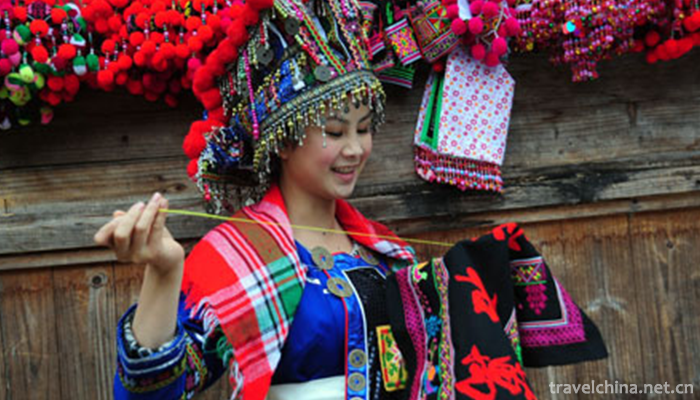
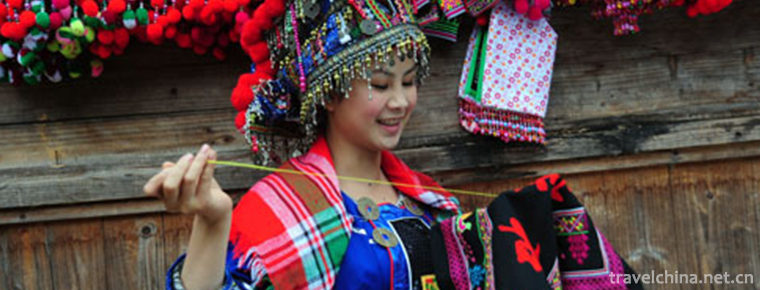
Yao embroidery
-
Stewed Pork Ball in Brown Sauce
Lion head is a traditional dish in the Huaiyang cuisine of Yangzhou, Jiangsu, China. Legend has it that Lion's Head began in the Sui Dynasty
Views: 401 Time 2018-10-27 -
Go BelieveGoubuli baozi
Goubuli steamed bun is a snack made of flour, pork and other materials. It was founded in 1858 (Xianfeng period of the Qing Dynasty).
Views: 227 Time 2018-11-14 -
The Mutianyu Great Wall
The Mutianyu Great Wall in Beijing is located in Huairou District of Beijing, 73 kilometers from the urban area of Beijing. With a long history and splendid culture
Views: 146 Time 2018-11-24 -
Dajiaowan Scenic Area Hailing Island Yangjiang
Dajiaowan Scenic Spot of Hailing Island in Yangjiang, located in Zhapo Town of Hailing Island in Yangjiang City, Guangdong Province, is a famous national AAAAA tourist attraction
Views: 178 Time 2018-12-12 -
CITIC Golf Seaside Resort
Shantou CITIC (China International Trust and Investment Corporation) Resort Hotel is a foreign-related tourist resort hotel affiliated to Shantou Company of CITIC South China Group.
Views: 166 Time 2018-12-22 -
Sunan Wenshu Temple Scenic Spot
The Sunan Wenshu Temple scenic spot is located at the foot of the Suzhu Chain, the main peak of Qilian Mountain in Sunan County, Gansu Province. It is a national key cultural relic protection unit and
Views: 196 Time 2019-02-13 -
Changqing Huayang Scenic Area
Huayang Scenic Area is a national AAAA-level tourist attraction, located in Huayang Town, Yangxian County, south of Qinling Mountains, 76 kilometers away from the county seat, with an average elevatio
Views: 214 Time 2019-03-17 -
Tibetan Layi
Tibetans are divided into three major dialect areas: Weizang, Kangba and Anduo, which form three areas with cultural characteristics combined with topography.
Views: 135 Time 2019-04-10 -
Maoshan chant
Maoshan chant is a traditional folk song originating in Maoshan area of Xinghua City, Jiangsu Province. It is a kind of folk song that people in Maoshan use chant form with chant words to stimulate em
Views: 151 Time 2019-05-28 -
Shoushan stone carving
Shoushan Stone Carving is a traditional folk carving art. It is made of Shoushan Stone, which is produced in the northern mountain area of Fuzhou. It is a small carving for people to enjoy through spe
Views: 145 Time 2019-06-15 -
Neijiang social security
In 2019, there were 109600 people participating in the endowment insurance (including retirees) of government institutions, 842500 people of enterprise employees (including retirees), and 1501700 people of urban and rural residents. 52100 new urban jobs
Views: 364 Time 2020-12-16 -
Meishan science and technology
In 2019, 80 science and technology projects above the municipal level will be organized and implemented, and 27.73 million yuan of free science and technology project funds will be put in place. In the whole year, 433 patents were applied and 94 patents were
Views: 369 Time 2020-12-18
